Video Tutorial Chromatography
Quick Notes Chromatography
- Chromatography is a technique used to separate a mixture and/or analyse the purity of a substance.
- Chromatography compares how long a substance spends in either of two phases.
- In the mobile phase, the sample is able to move.
- In the stationary phase, the sample is unable to move.
- Paper Chromatography and Thin Layer Chromatography (TLC) work in similar ways.
- The Rf value shows how far the sample moves compared to the solvent.

- The Rf value shows how far the sample moves compared to the solvent.
- Gas-liquid Chromatography measures the time taken for a sample to move through the stationary phase.
- Gas-liquid Chromatography Mass Spectrometry (GCMS) enables the molecular masses to be determined and matched with the time taken for the sample to move through the stationary phase.
Full Notes Chromatography
Chromatography is a technique used to separate a mixture and/or analyse the purity of a substance.
There are two phases in all forms of chromatography: a mobile phase and a stationary phase. In the mobile phase, a sample is able to move; in the stationary phase, the sample is unable to move.
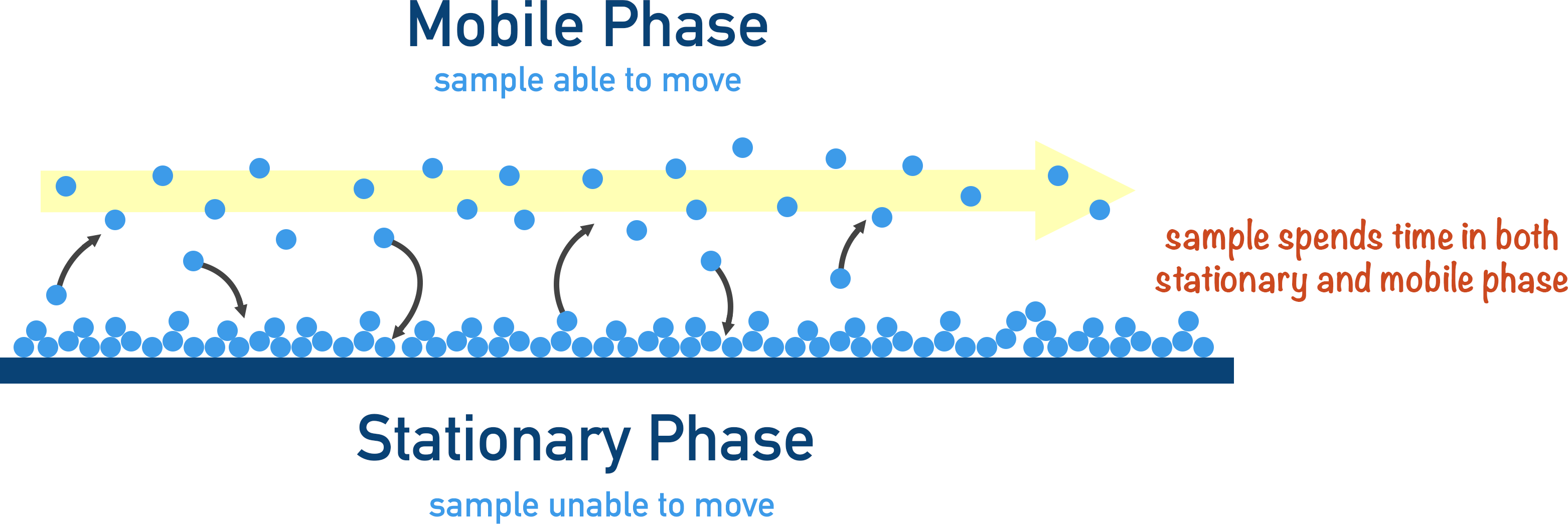
Chromatography works by comparing how long a substance spends in either the mobile or stationary phase.
Paper Chromatography
The most common form of chromatography is paper chromatography. A sample is placed on a piece of chromatography paper (often just filter paper) in the form of a small dot, then the filter paper is placed upright into a solvent, ensuring the sample dot is not in the solvent.
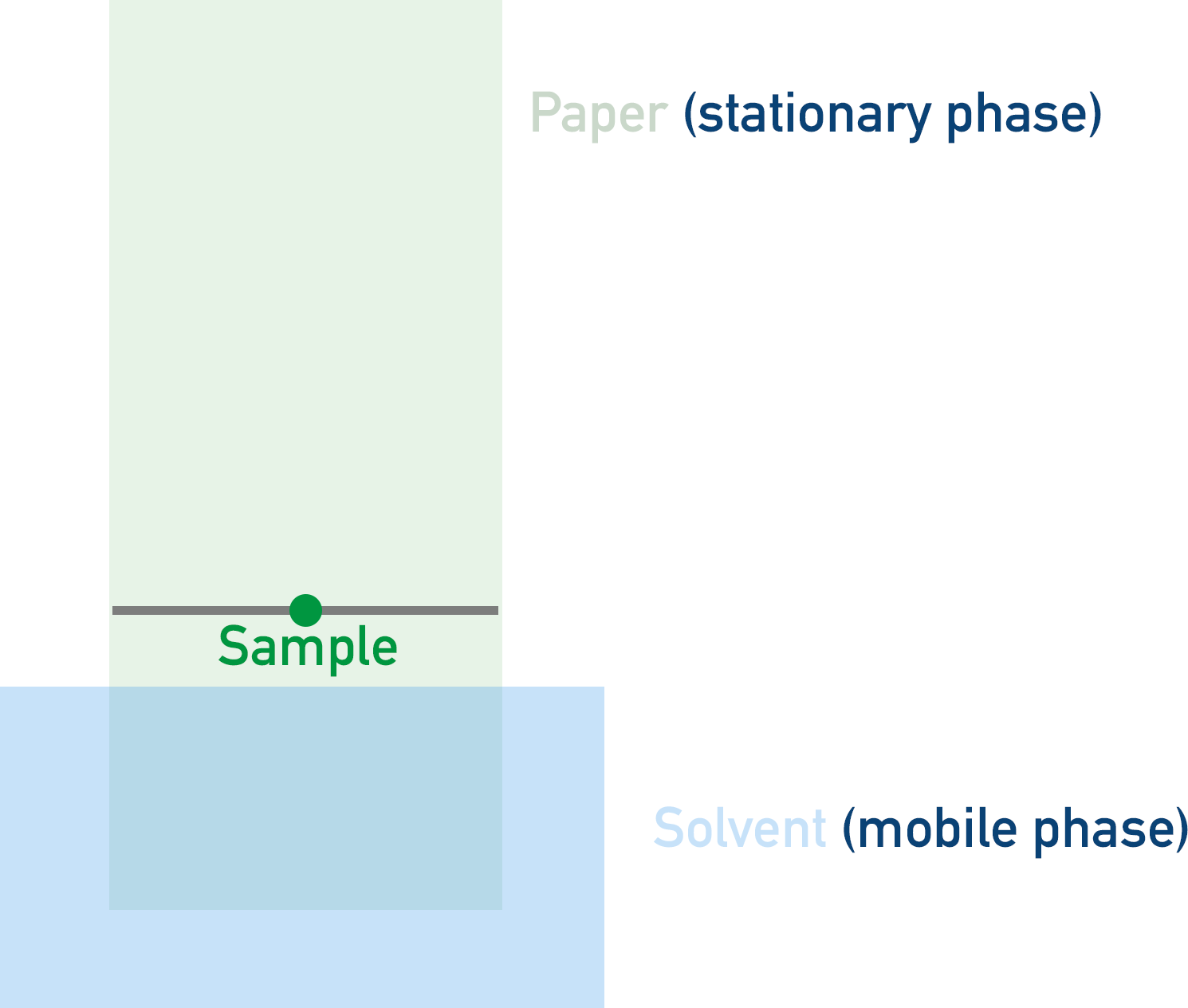
The solvent will move up the paper (due to capillary action) over time. When the solvent reaches the sample dot, the sample will dissolve into the solvent and move up the paper. When in the solvent and ‘moving’, the sample is in the mobile phase; when on the paper (not moving), the sample is in the stationary phase.
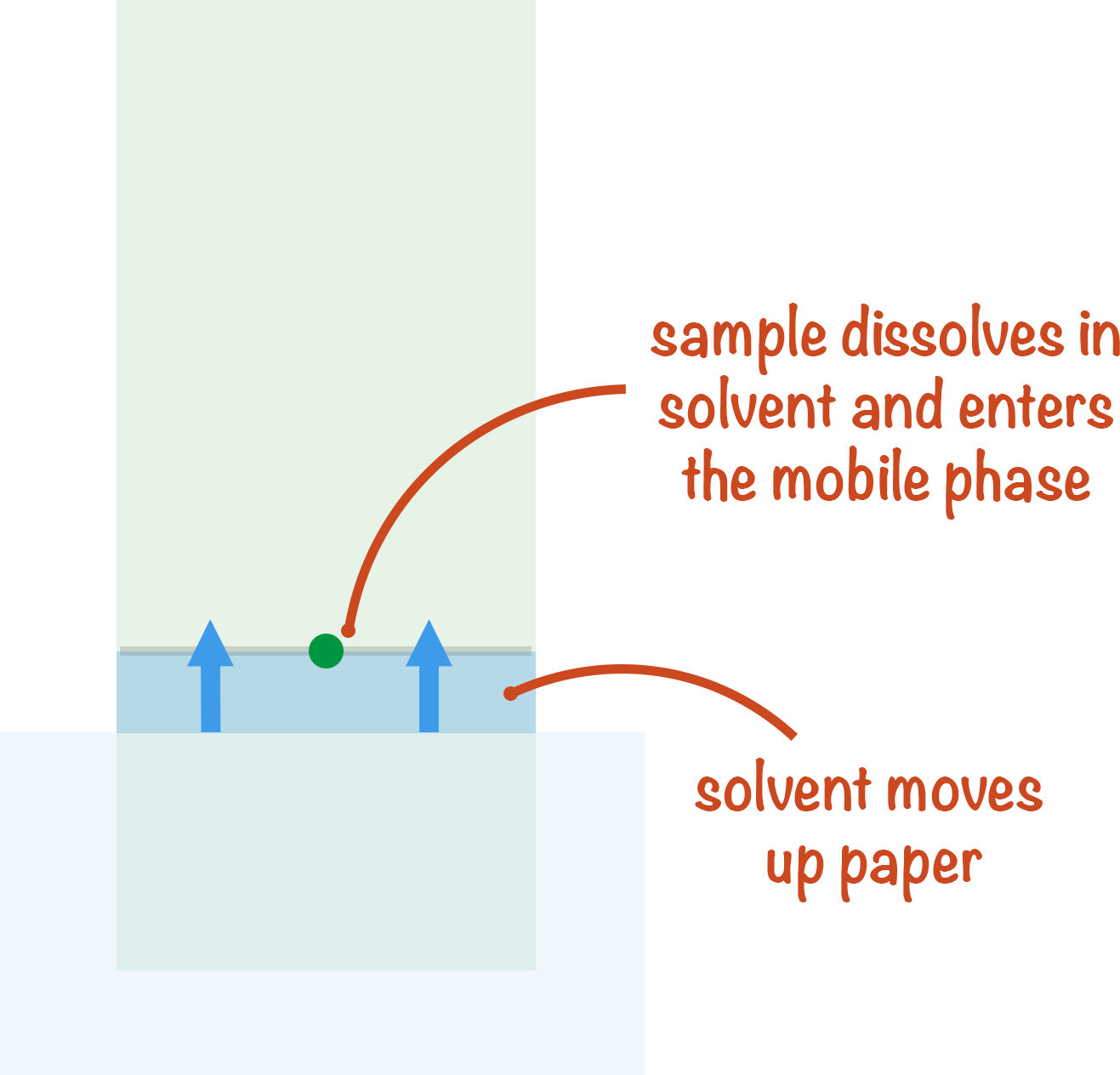
The more easily a substance dissolves in the solvent (higher solubility) the further it will travel up the paper, as it will be in the mobile phase for longer. The less easily a substance dissolves in the solvent (lower solubility) the shorter the distance it will travel up the paper, as it will have been in the stationary phase for longer.
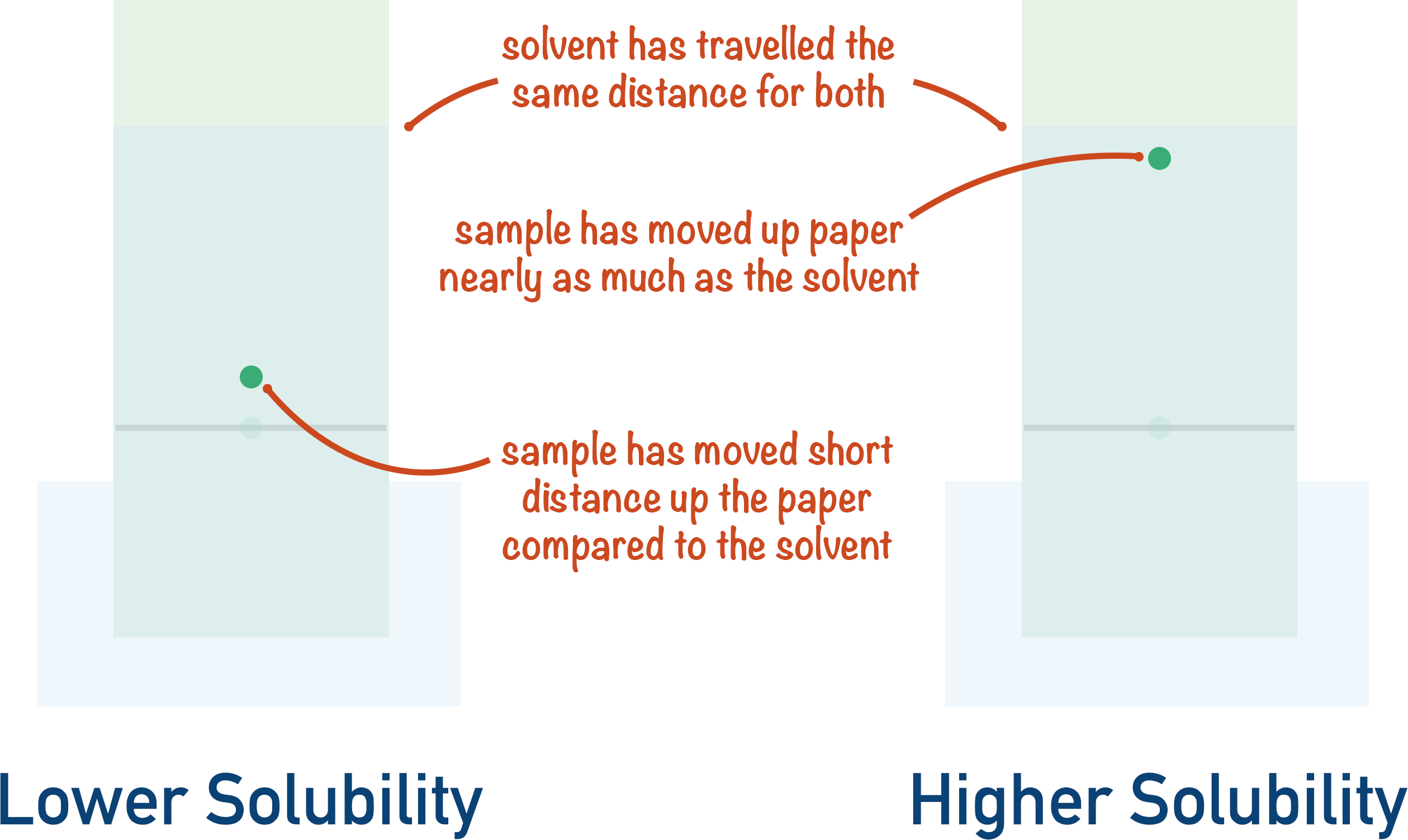
This affinity (desire) to be in either the mobile or stationary phase allows a sample mixture to be separated, as all the substances in the mixture will travel up the paper differing amounts.
Retention Factor
It’s not how far the sample travels in chromatography that’s actually important, it’s how far the sample moves compared to solvent. This relationship can be expressed with a decimal number using Rf values.
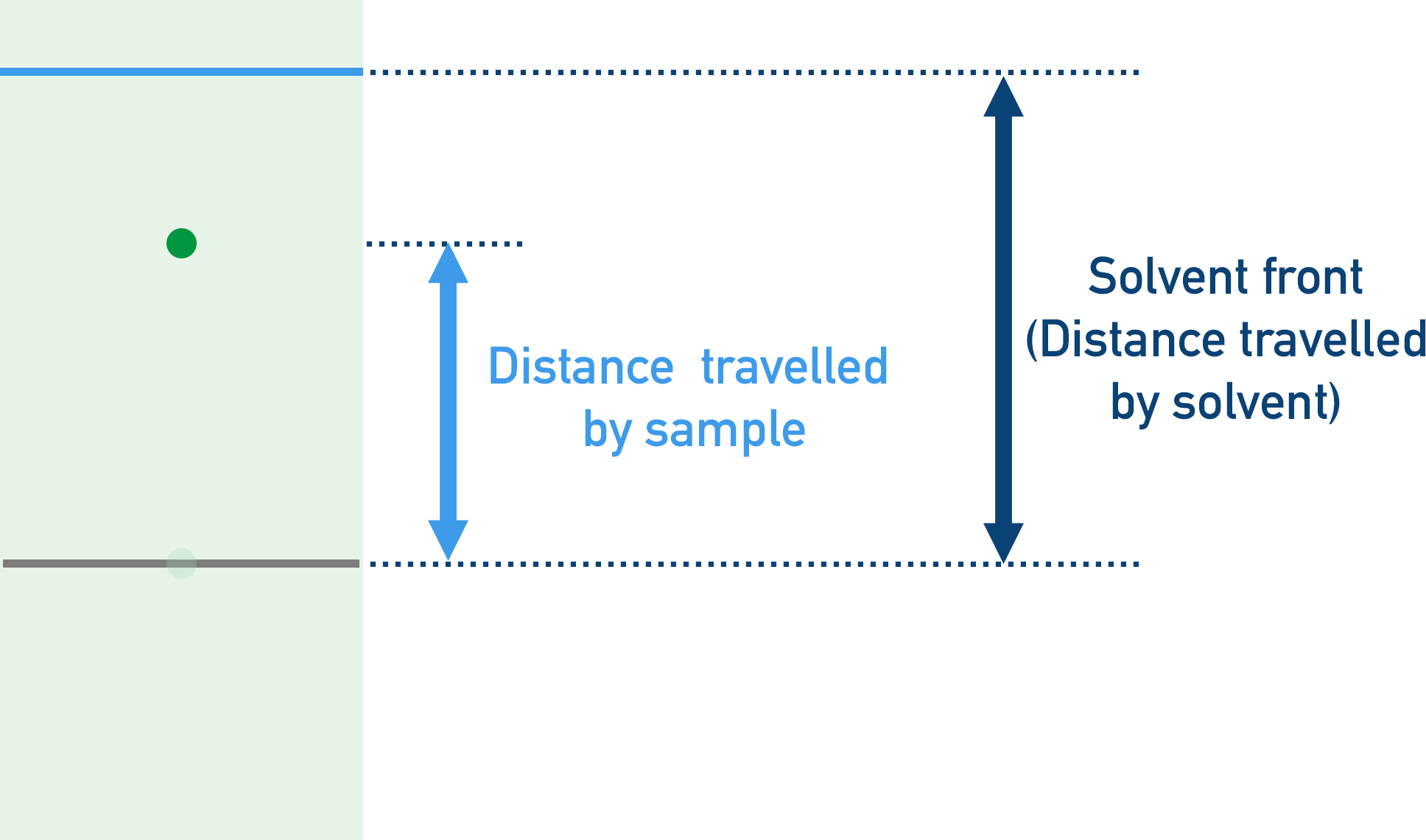
Rf stands for retention factor and is calculated by taking the distance travelled by the sample and dividing it by the distance travelled by the solvent. The value should always be between 0 and 1.
A low Rf value shows the sample has a low solubility in the solvent; a high Rf value shows the sample has a high solubility in the solvent.

Rf values have no units.
Thin Layer Chromatography
Thin layer chromatography (TLC) works in a similar way to paper chromatography, using a stationary phase made of a thin plate coated with silica (often with an aluminium backing to help with strength) instead of a paper plate.
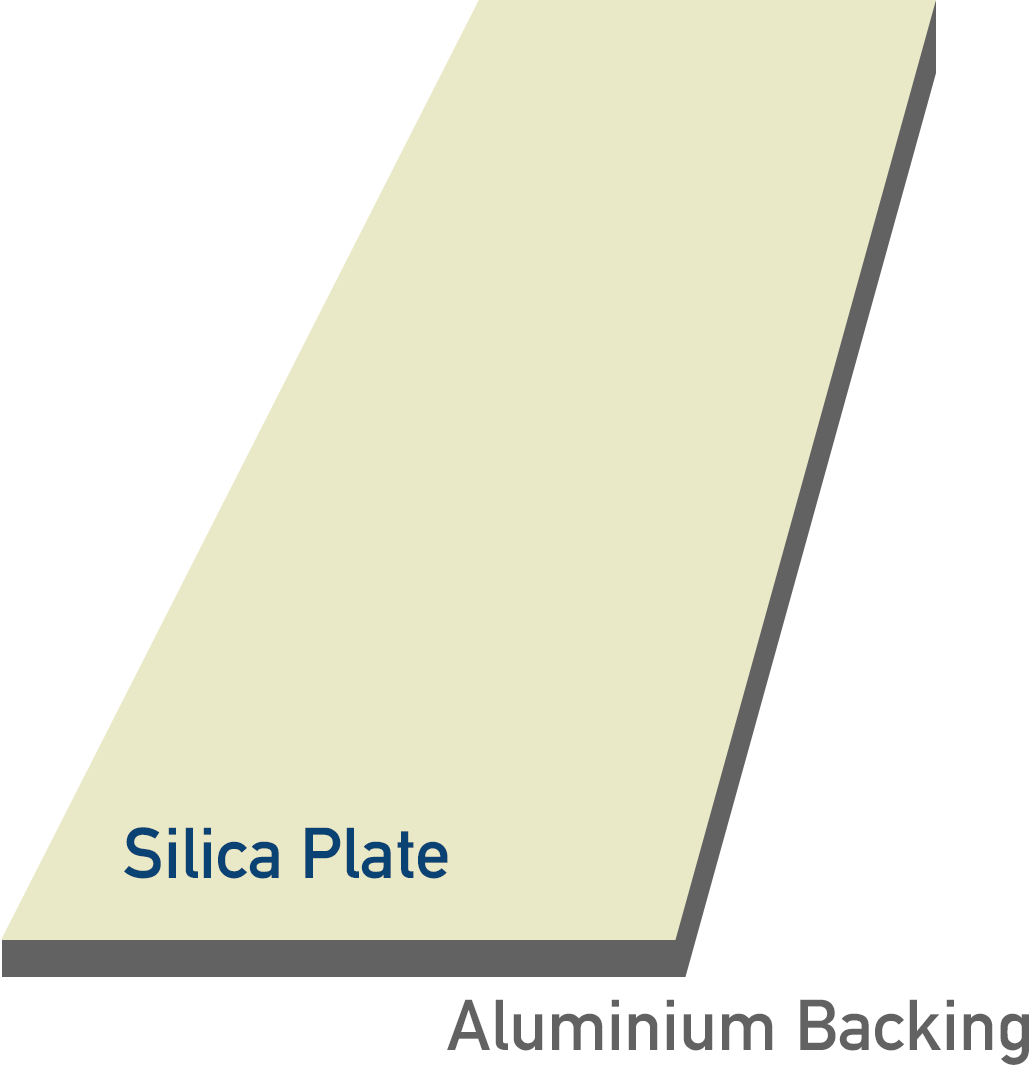
One main advantage of thin layer chromatography compared to paper chromatography is the ability to use corrosive and highly reactive reagents. Corrosive substances would damage the cellulose in paper, whereas the unreactive silica gel remains unaffected in thin layer chromatography.
Many organic substances have no colour, so ultraviolet light (or a fixing compound) is used to identify sample spots on the plate. This enables Rf values to the calculated in the same way as for paper chromatography.
Gas-liquid Chromatography
Gas-liquid chromatography uses an inert gas as the mobile phase, and a thin liquid coating on a column of small, solid beads as the stationary phase. As with all forms of chromatography, the purpose is to analyse a sample’s affinity for either the mobile or stationary phase.
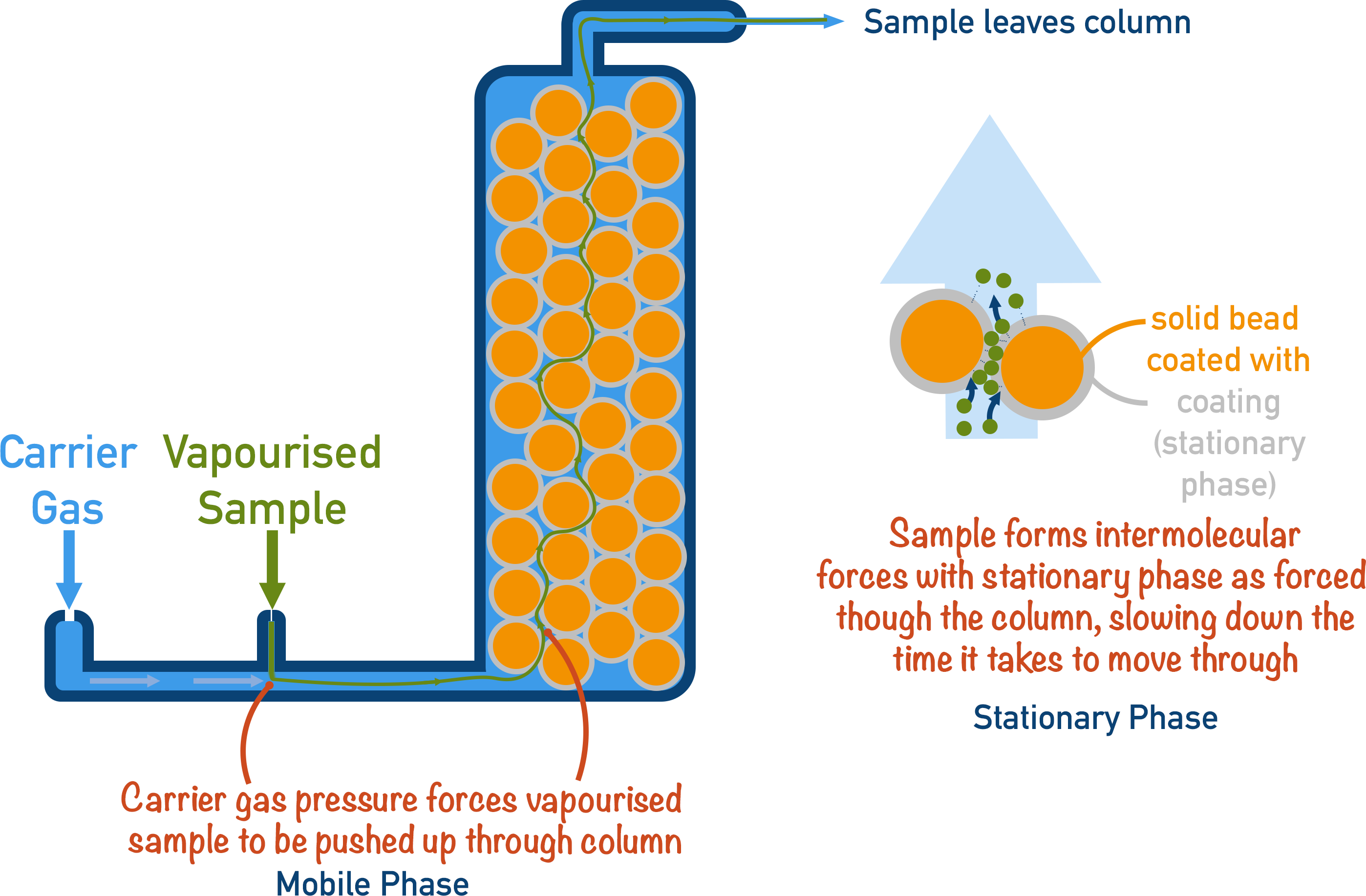
Unlike for paper chromatography and thin layer chromatography no Rf value is calculated, instead we measure the time taken for a sample to move through the stationary phase. Samples with a low affinity for the stationary phase will stay mostly in the mobile phase and move through the column quickly. Samples with a high affinity for the stationary phase will take longer to move through the column, as they will spend less time in the mobile phase compared to the stationary phase. A signal is produced by a detector each time a sample comes out of the column, and the time is recorded for when the signal was detected. All signals produced by a sample are printed onto a graph called a chromatogram.
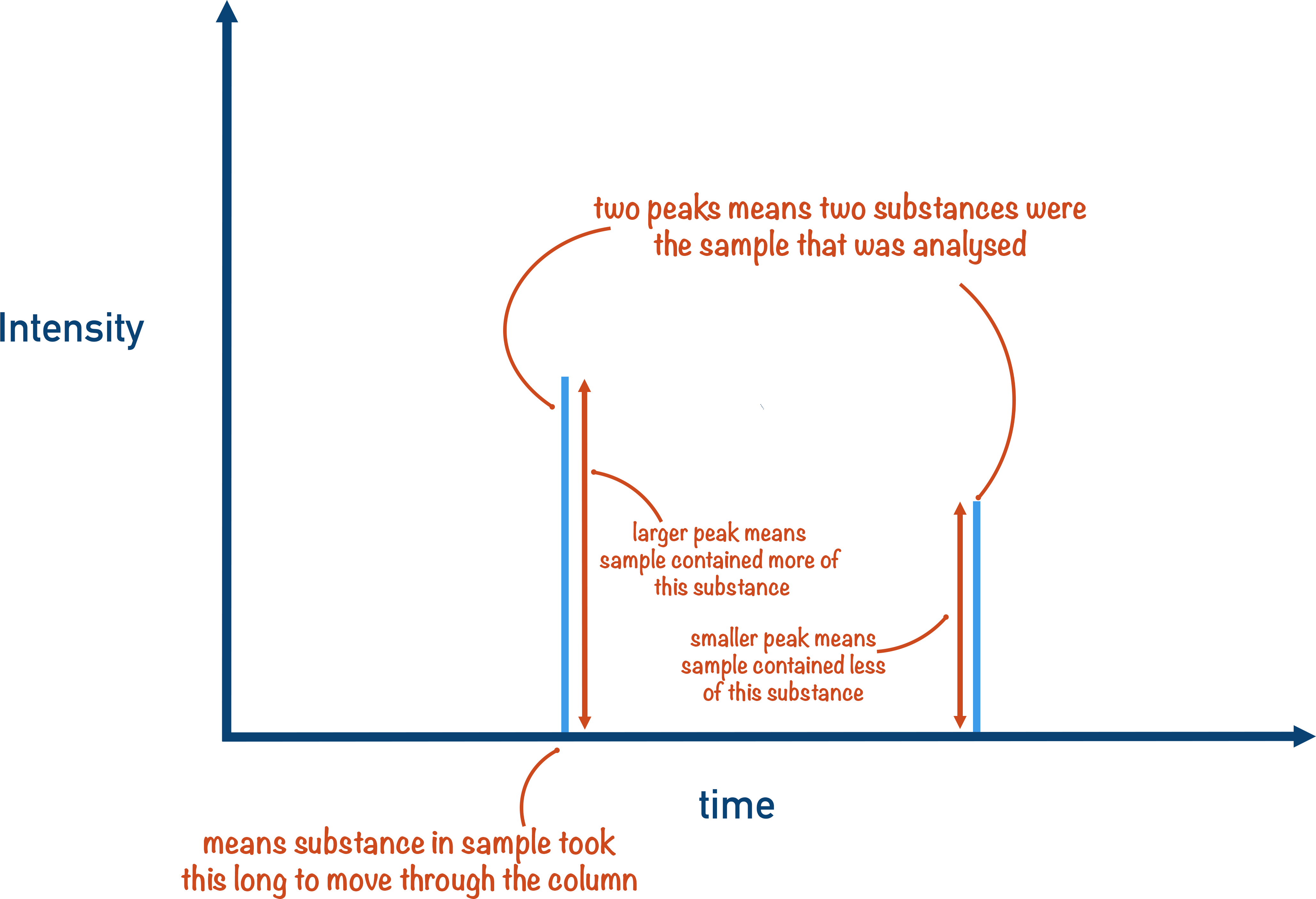
Gas-liquid chromatography is very precise and can be used to analyse small samples. It’s complicated to set up, and all samples must be injected into the mobile phase (inert gas) as they enter the column. The inert gas is under pressure, forcing the mobile phase through the column. To ensure the sample stays vaporised, the column is coiled inside an oven to keep the sample boiling. This ensures it’s the affinity for each phase, and not simply the physical state of the sample, that determines how long it will take the sample to move through the column.
By changing the length of the coil, the density of solid in the column and/or the pressure of the carrier gas, the retention time of a sample can be altered.
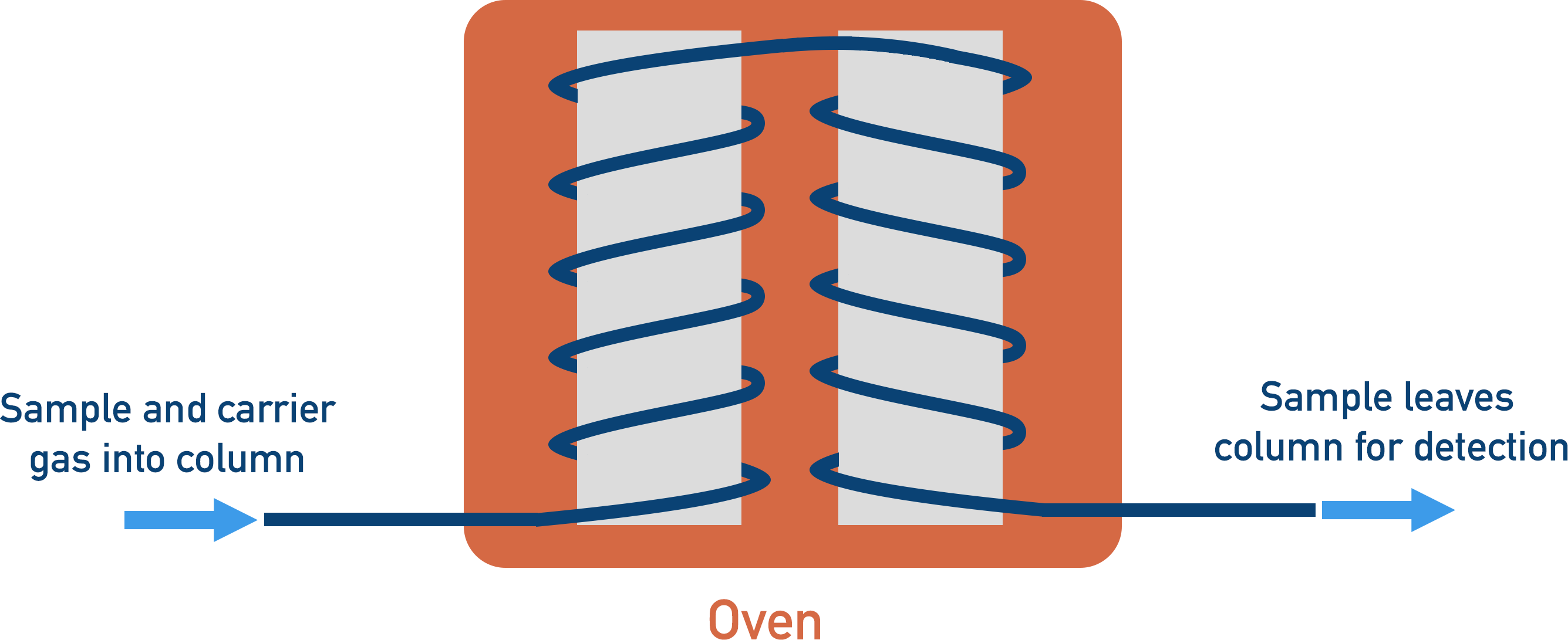
Gas-Liquid Chromatography Mass Spectrometry (GCMS)
Gas-liquid chromatography is very effective for separating a mixture, but it does not provide any information as to the possible compounds detected. Mass spectrometers can be added to the detector, then the molecular masses of each compound in the mixture can be determined and matched with the time it took for the sample to move through the column.

We’ve launched our new site! 🎉
Course-specific notes with built-in search!
AP • A-Level (AQA • CIE • Edexcel • OCR) • IB • NCERT 11 + 12
over 750+ new pages and 3,500 images.
Visit the new homepage
